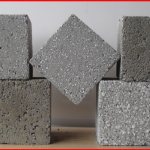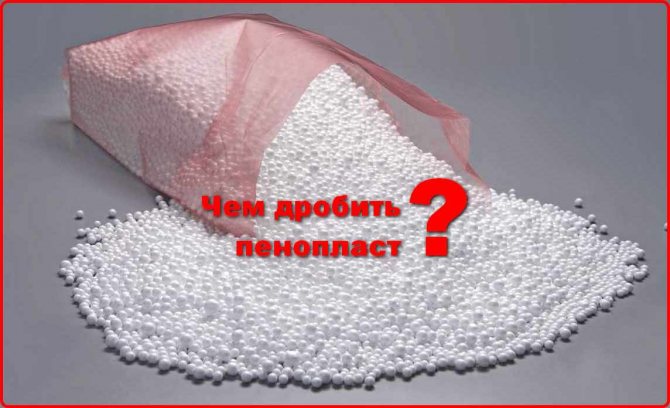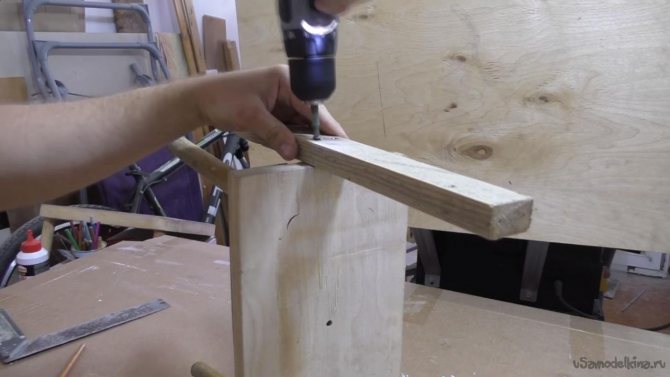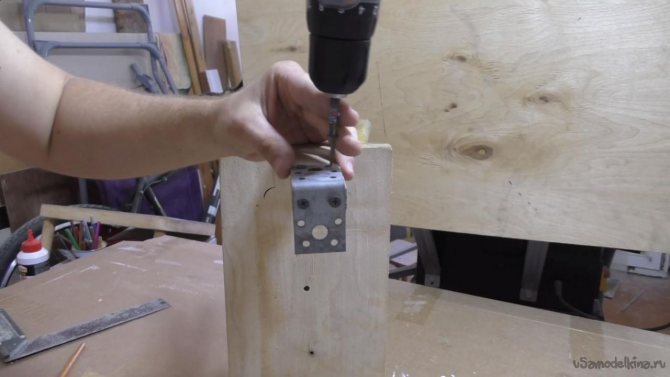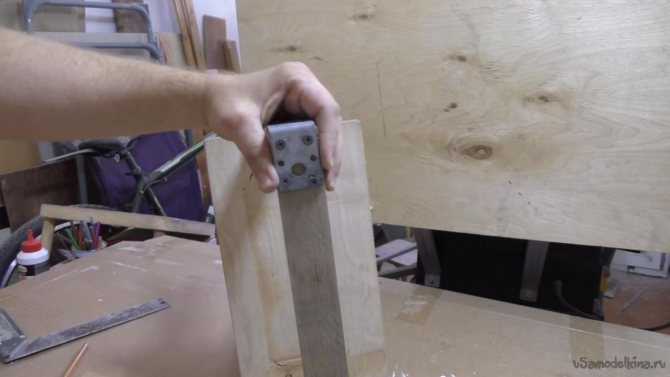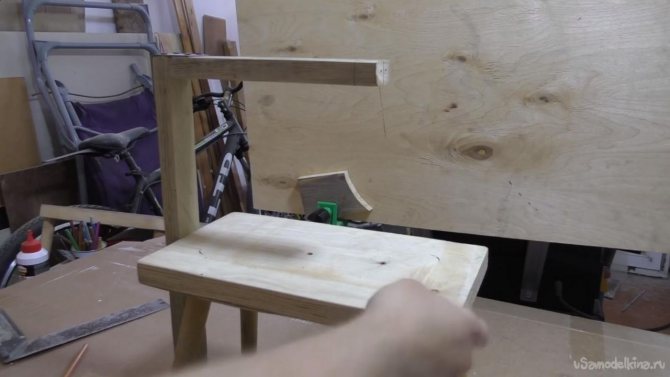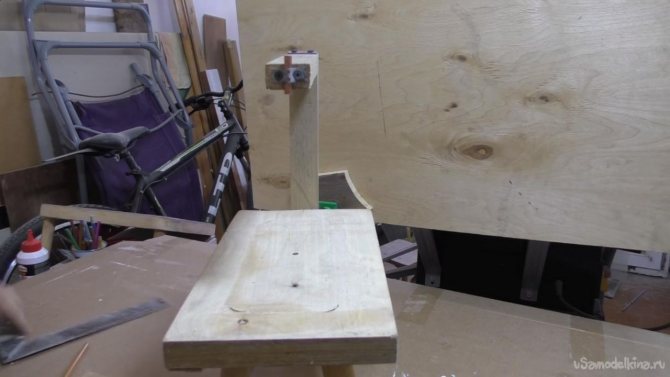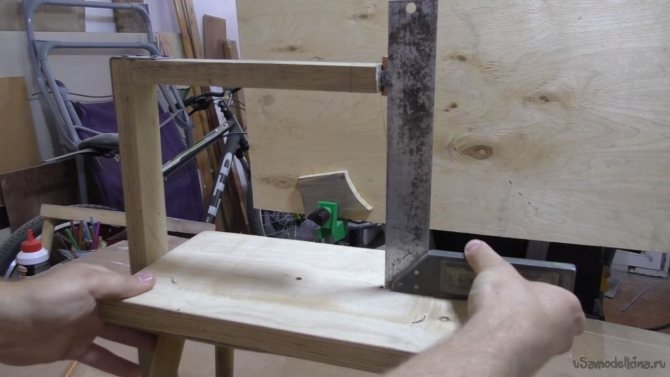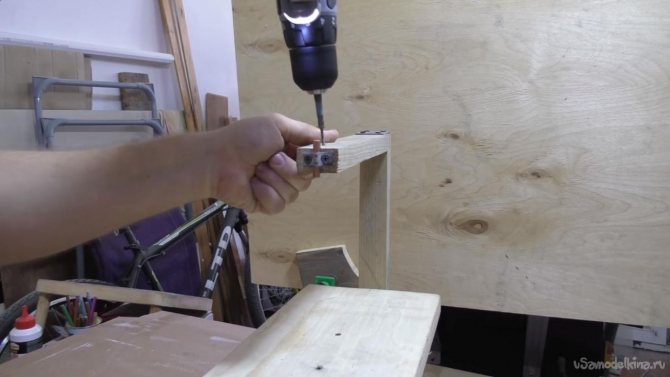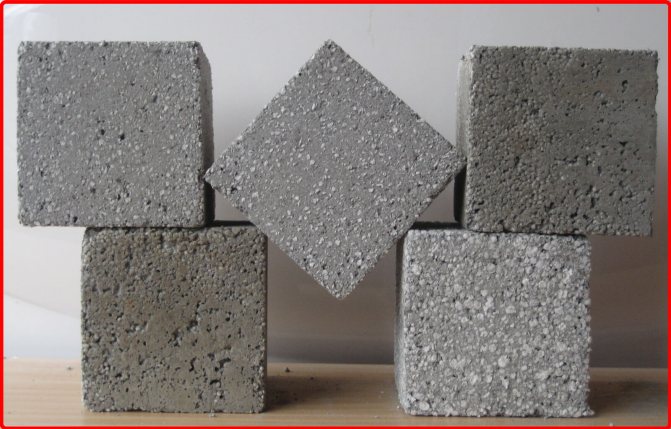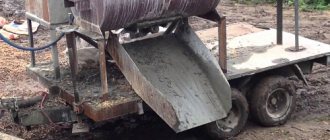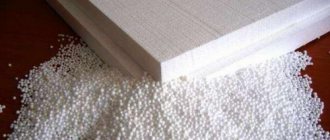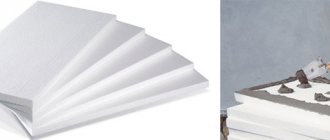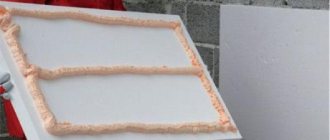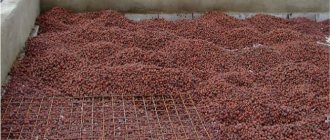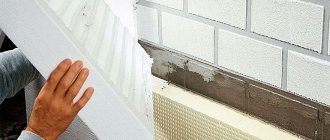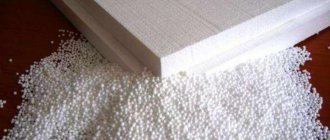- Date: 27-02-2015Comments: Rating: 32
Today, a person who wants to get rich certainly ever begins to think about opening his own production.
This always requires significant initial capital, various equipment and other conditions. However, there are also economical options that do not require large cash costs. For example, foam is not used in any way after it is used in construction or as a protective layer in the packaging of various goods.
Crushing chamber diagram.
Do-it-yourself foam crusher
This material is not disposed of like others, as it becomes harmful to nature and humans. When interacting with water, the foam does not deteriorate or decompose, and it is forbidden to burn it due to the release of poisonous gases. But it can be reworked and implemented.
This is the safest disposal method. Only in the beginning it is necessary to think over everything well, calculate in detail and make a foam plastic shredder with your own hands. Its waste bypasses all stages of crushing, and after that, a fairly good quality crumb is obtained.
Crushed foam is often used:
- in the construction of roofs; as a backfill with the property of shock absorption; when added to cement to level the surface; when insulating various kinds of pipes; when added to cement for sound and heat insulation; as a filler for upholstered furniture without a frame; in the production of blocks of polystyrene concrete.
Crusher assembly diagram.
A Styrofoam Shredder is fairly easy to make if you want to, as long as the scrap foam is available at all times. In addition, a DIY foam crusher is much cheaper than purchased in a store. To do this, it is imperative to have an electric motor with a low-speed engine so that the foam is crushed into separate balls.
In industrial production, it enters the crusher towards 2 knives, which are fixed on the drum wall and on the shaft. When rotating, the shaft passes through the axis of the steel drum.
The material falls between the knives and is cut into individual pieces. The foam particles fall on the mesh with air for further sorting. From there, large parts are returned again under the knife.
On the basis of a production crusher, you can make a crusher yourself. But this structure is difficult to assemble, and it becomes a source of polystyrene dust.
In addition, particles with a diameter of about 2 cm are obtained. You can also make a simple crusher. It is carried out according to the scheme of a simple mechanical grater.
Back to the table of contents
It consists of materials such as:
- Round mesh disc Drive shaft to secure the disc Base (holds the drive shaft) Guide plane (feeds the foam)
The foam crusher has the following structure:
Shaft crusher diagram.
- The grater is held on the shaft, and they rotate together at the same time. The shaft can drive any motor through a gearbox capable of reducing the number of revolutions. The foam goes to the grater along the guide surface. The gap between the knives and the hole in the grater determines the diameter of the balls at the exit ...
A self-made shredder, although it comes out at a cheaper price than a purchased one, has a number of disadvantages.
Firstly, this is a large amount of dust in the crusher, and secondly, the complexity of crushing to the required particle size, as a result of which uncrushed pieces remain.For them, a special hand crusher is used, which is a simple plastic box where fruits and vegetables were stored. The rest of the foam must be rubbed along the bottom of the box, like on a grater.
If the production of foam processing is set up correctly, then a homemade crusher can bring a good income.
It is only necessary that the material is always at hand, and it is also necessary to create conditions for packaging the obtained granules in bags and sacks. It should be noted that the shredder is unpretentious in operation - you just need to connect it to the power supply.
Foam crushing may be needed both to obtain foam crumbs for your own needs, and for industrial production of material for the purpose of sale. After all, shredded material is more expensive than solid material, which, moreover, is often thrown away after being used as protective packaging or insulation.
The advantages of the crushing option are minimal investment and ease of assembly of the device. The main thing for this is to know how to make a crusher that will provide a capacity of 200 or more liters per hour. Also read: "Insulation of concrete with foam".
Do-it-yourself plastic crusher
Polymer materials have firmly entered modern life, and there is not a single industry where they are not used, from the production of containers to space technologies.
About 180 million tons of various plastics are produced on the planet every year.
Most of them cannot decompose on their own into simple components and dispose of yourself.
This causes irreparable damage to nature and can cause an ecological disaster.
A positive feature of almost any polymer (plastic) is the possibility of recycling, thanks to which old plastic things can get a "new life" as useful items.
Recycled plastic is slightly inferior in strength characteristics to the primary polymer, but with known proportions, products made from recycled plastic practically do not differ from the original one.
Varieties of shredders
Before the production of recyclable materials, any plastic must be shredded. For this, there are special devices - crushers... Depending on the physical properties of the polymer placed in them, the devices can be classified into several categories:
- for shredding PVC foil, nylon or acrylic. The design is reminiscent of large scissors with V-shaped blades;
- for large plastic waste. Most often used in recycling plants or plastics factories. There are hammer, jaw or conical designs. With their help, window profiles and large parts and cases are crushed;
- for PET bottles and thin-walled plastics. The most common version of the grinder is structurally called rotary.
The required type of device can be purchased or made by yourself. This is a small household appliance from the third category. A do-it-yourself plastic crusher is quite easy to do and does not require serious knowledge and specialized tools, except for a welding machine.
Learn more about the rotary shredder
The most common design is the impact crusher. It consists of a rotor on which the knives are fixedly fixed.
Under the action of the driving force - from a diesel, gasoline engine or an electric motor, the axle with the knives starts to move and with quick blows crushes the raw materials that have got under the knives.
Depending on the purpose, there are low-speed machines and high-speed units.
At the bottom of the working chamber, a sieve or grate with a certain mesh size is installed, depending on the required quality and diameter of the resulting fraction.The raw material is cyclically processed with knives and gradually passes through a sieve.
Particular attention is paid to the quality of the metal from which the knives are made - it must be good hardened steel, which prevents rapid wear and ensures that the sharpening is maintained for a long time.
We make a crusher ourselves
There are several of the most popular home-made plastic grinders. In order to assemble this device with your own hands, you will need a little patience and minimal skills. As a special tool, you only need a welding machine or a household inverter.
A do-it-yourself plastic crusher, the scheme of which will differ slightly depending on the level of skill of the manufacturer and his imagination, has the following common elements:
- drive unit. The most commonly used is an electric motor. Due to the large selection and affordable prices, you can choose a model of the required power. In addition, the electric crusher is quieter and can be used both outdoors and indoors;
- circular saws. This will be the foundation of our apparatus. It is necessary to select a sufficient number of them and a different configuration of teeth for better crushing of waste. The optimal number of saws on the axis is about 20;
- the axis on which the saws will be mounted;
- metal profile or pipe for the manufacture of the support frame and the crusher frame;
- protective cover and feed hopper. They can be independently made at home from galvanized sheet using metal scissors, a hammer and a vice;
- a pulley, two bearings and a special belt, with which an interaction is created between the electric motor and the rotor;
- fasteners (nuts, washers and self-tapping screws for metal).
The benefits of crushed foam
Crushed foam can be used to stuff upholstered furniture.
Foam plastic, which is an excellent heat insulator and is made using the foaming process, in crushed form is used for the following works:
- construction of roofs; thermal insulation of pipes for various purposes; leveling the surface of cement; production of polystyrene concrete blocks; improving the sound and heat insulation qualities of some building materials.
Often, crushed foam is used as a filler for frameless types of furniture - sofas, armchairs. You can find it inside toys and even pillows.
To make a roof vapor barrier with your own hands, you need to correctly follow the installation technology. How to make a vapor barrier for walls was described in one of the previous articles.
If you need to get enough of this material at home, the foam crusher can easily be made by yourself. To create it, regardless of the option chosen, you will need an electric motor with a low rotation speed, a housing and a container for collecting foam crumbs.
Foam crumb application
Foam crumbs are polymerized rounded balls with a diameter of 3 to 7mm. Crushed foam (this type of crumb is often called) is obtained by the method of industrial crushing of industrial foam waste. Economically, this method is more efficient, since thanks to this method of processing foam plastic, it becomes cheaper as a primary material, and the initial properties of the foam during crushing remain the same.
Application of foam crumbs:
Expanded polystyrene chips are widely used in the industrial and construction and repair areas. Crushed foam is mainly used as a building material and excellent insulation. Thermal insulation with foam crumbs is considered the most economical and reliable method for thermal insulation of foundations, floors, walls or roofs.Let's consider the basic principles and methods of use:
- Filler: holes and cavities in ceilings between walls, in brickwork or for leveling surfaces are poured with foam plastic chips. Due to their technical characteristics, the foam granules can take any shape, which avoids any cold bridges. High strength allows you to avoid deformation, in contrast to such heaters as expanded clay and mineral wool.
- Floor screed with foam crumbs: the process of preparing polystyrene concrete takes place in several stages. Initially, a solution is prepared: take a small amount of water and cement, mix until a creamy consistency is obtained. The second stage: continuing to mix the solution in a concrete mixer, add foam crumbs. The material ratio depends on the expected thermal insulation result. The higher the percentage of foam granules, the greater the thermal insulation properties of your screed. However, it is necessary to consider the following, if the material is not properly distributed, the density may decrease. For example, if you are planning linoleum on the floor, the percentage of use of foam granules should be less than when laying parquet.
If you yourself want to make a floor screed with foam crumbs at home, then to obtain a solution, you must observe the following proportion (* recommendations of builders):
- 4-5 buckets of expanded polystyrene crumbs
- 2 buckets of sand
- 1 bucket of cement
- 1 bucket of water
It is important to note that when working with expanded polystyrene crumbs, it is necessary to adhere to the norms of use and observe safety precautions: avoid open fire, do not use various chemical solutions.
A crumb of foam is an effective material for insulating concrete floors, it will last a very long time and will not lose its operational properties. Comfort and warmth guaranteed!
Int-Deco offers to buy foam crumbs in Kiev or with delivery across Ukraine. Crushed foam plastic is packed in polyethylene bags of 0.33 m3.
fasad-dekor.kiev.ua
Types of foam grinders
You can choose the type of foam crusher based on the amount of material.
If the main task is to obtain 1-2 small bags of crumbs, for its implementation you may not need to assemble a special unit at all. It is enough to use a metal brush, which is used to rub sheets of foam insulation, or a homemade "grater" from a box with cells. This method will be ineffective, but it will avoid costs.
It is better to immediately purchase a high-quality material for the vapor barrier of the roof than to redo all the work later. The method of laying the vapor barrier is completely different from installation on the roof.
If the amount of material is large enough, and you do not need 1 bag, but 10, 20 or more, you should decide how to make a crusher:
using a grid (production 0.2-0.3 cubic meters)
m / h). The most profitable and quickly implemented method; using as an example an industrial crushing plant (at least 1 cubic meter per hour). The equipment will cost more (although it is more profitable compared to buying a ready-made version) and will take more time to manufacture.
Foam crumb for insulation
Foam crumbs can be considered one of the most popular materials for insulation. The choice of consumers is justified, since this is a high-quality, environmentally friendly material that will help make the house warm and comfortable without significant damage to the family budget.
Foam crumb properties and applications
Foam crumbs have a number of advantages over other thermal insulation materials.
Foam crumb - what is it
Foam crumbs or granules are a bulk material that is noted for its versatility and is represented by foam balls with a diameter of about 5-6 mm.
Characteristics and properties of foam crumbs
Foam granules have all the properties of a solid sheet, but unlike foam boards, granules can take the shape of any container where they are placed. Expanded polystyrene granules have a number of features:
1 Almost does not conduct heat. Polyfoam is tens of times higher than the thermal insulation of conventional concrete and almost ten times higher than ceramic bricks.
2 Safe for people, does not contain toxic substances, does not cause allergic reactions, odorless, no organisms live in it.
3 Low weight. For comparison, 1 cubic meter of foam chips weighs about 15 kg, and plywood - about 500 kg.
4 Wear resistance. Data from laboratories that test polystyrene foam will determine the durability of the material - about 80 years.
5 Very resistant to temperature changes and can withstand drops from -170 to +90.
6 Sound insulation due to the elasticity of granules, cellular structure, which reduce sound vibrations.
7 Ability to restore its original shape during deformation.
8 Ensuring air exchange of the surrounding space, i.e. unlike regular polystyrene, granules are able to "breathe". This prevents the greenhouse effect and further mold growth.
Foam crumbs are characterized by the following criteria
1 Density of the material from which the balls are made. The high density of the substance determines the increase in the mass and strength of the granule.
2 The diameter of the granules can be varied from 1 to 8 mm by setting the desired size during crushing.
3 Flammability. That is why this material is used in the inner layers of walls. To increase the fire resistance, a fire retardant is added to the foam. After that, the material becomes self-extinguishing.
Pros of foam crumbs
All materials have their own advantages and disadvantages. Foam granules are no exception.
You can highlight the following advantages in using foam crumbs:
Less weight of the final structure.
Savings on further finishing materials due to heat and sound insulation properties.
Simplicity in the process of work.
Low cost.
Cons of using foam chips
The soft structure of the foam makes the screed from such a solution less wear-resistant.
The need for isolation from air due to its flammability. Foam concrete is capable of rapid destruction if it comes into contact with air.
Varieties of foam crumbs
There are two ways to obtain granules from polystyrene foam and, accordingly, two types of them:
Primary treatment, when a special technology is used to expand the polystyrene beads. This is an expensive process.
Crushing foam waste. This is a secondary production, therefore, it is more economically profitable. The rest of the foam is placed in special machines that crush the material to homogeneity. If necessary, you can set the desired ball diameter.
The cost of foam granules
The efficiency of foam crumbs was noted as a high-quality material for insulation in comparison with others. Depending on the characteristics of the foam granules and the method of their production, the price per cubic meter can vary significantly. The smaller the granule diameter, the higher its price. Foam chips obtained by crushing are significantly cheaper than those obtained by primary foaming.
The use of foam granules in various fields
Foam crumbs insulate attics, walls, interfloor ceilings and the floor.
1 Insulation of the attic. The room loses a significant percentage of heat through the roof. Foam granules are an excellent option for insulating an attic due to their low degree of moisture absorption and resistance to temperature extremes.
2 Wall insulation.In addition to the main characteristics, foam crumbs take the form of a container in which it is located, this is especially important when insulating a facade with curly elements.
3 Insulation of interfloor ceilings. Sound insulation and the specific weight of the final structure are important in the formation and insulation of interfloor floors. Foam crumbs are also useful for floor insulation if there is a basement under the house that is not heated and additional insulation is required.
Brief summary
Consumer interest in foam granules is justified by its versatility and low price. Due to its unique properties, foam crumbs are in demand in many areas from construction and furniture manufacturing to the creative process of design and fishing.
The cost of foam granules depends on the technical characteristics of the granules themselves and the method of their production.
Insulation 10 mistakes
www.samsdom.ru
Mesh crusher
The simplest way to make a foam crusher with your own hands is to create a small grating machine, the design of which consists of:
The scheme of the grater machine.
- a round mesh element in the form of a disk; a shaft on which the mesh is installed; bases for attaching the motor and shaft. The motor can be taken, for example, from a concrete mixer, by additionally installing a gearbox to reduce the speed (too fast rotation will lead to too small particles).
The foam is fed onto a rotating mesh, the size of the holes of which determines the diameter of the resulting granules. Feeding is carried out manually and requires preparation of the material - cutting it to the width of the disc.
The advantage of this option is its low cost. The disadvantage is the difficulty of crushing all the pieces and a large amount of dust in the air. The first problem is solved by manual grinding (boxes and brushes), the second - using means of protection of the organs of vision and respiration.
Classic crusher
To increase the production of foam granules, it is worth using the design of an industrial foam crusher, which can be purchased - but it is more profitable to do it yourself.
Production crusher knives.
In the production of foam chips, the material flows into the crusher body towards the two knives mounted on the drum and on the shaft. Getting between the cutting edges, the foam is crushed and gives granules of the desired size at the exit.
When self-made, the grinder is assembled from a welded metal box, inside which two shafts with long teeth rotate. They can be made, for example, by screwing ordinary screws into a wooden roller or by installing and fixing rods in the drilled holes.
In the production of foam crumbs, you can make good money with minimal investment.
As a rotating device, the same low-power and low-speed motor is selected as for the crusher-grater. The result is particles with a diameter of several millimeters, which, if necessary, are refined by hand. The principle of operation of such crushers is helped by photos of already manufactured
How and where is recycled material used
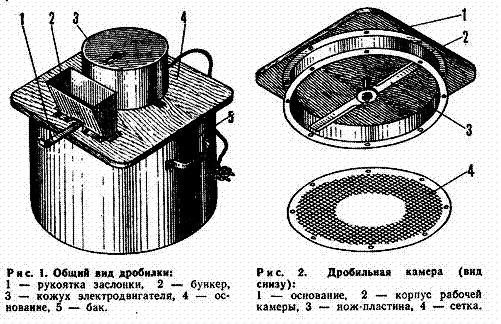
Crusher assembly diagram.
- as a shock-absorbing bedding;
- in the construction of flat roofs;
- as a cheap and high-quality insulation for walls and slabs;
- for insulation in pipe trenches;
- added to the cement mixture for better leveling of the surface;
- added to the cement mixture for heat and sound insulation;
- for the production of polystyrene concrete blocks;
- as a filler for frameless furniture.
With the constant availability of scrap foam and, if you wish, to crush it for further sale, it will not be difficult to make a chopper with your own hands. It is clear that such a homemade crusher will cost less than a purchased one.The most important thing is to have an electric motor with a low-speed engine available, otherwise the material will be crushed into dust, and not into individual round balls.
In industrial production, the foam sheet enters the shredder towards 2 knives. In this case, one knife is fixed immovably on the wall of the steel drum, and the second, fixed on the shaft, rotates, passing through the axis of the drum. The sheet, falling between the knives, is cut into pieces. The size of shredding is determined by the gap between the knives, then the foam particle is fed by air to the screen for sorting. From there, large particles are returned under the knife again.
A production crusher can be taken as the basis for creating a DIY crusher. But this design is difficult to assemble, creates a lot of polystyrene dust and the size of the crushed foam particles is on average 2 cm in diameter. A simpler do-it-yourself foam crusher can be made on the principle of a mechanical vegetable grater.
findings
Correctly tuned production of foam chips can bring some profit.
The main thing is to provide a sufficient amount of raw materials and resolve the issue of packaging. Granules are distributed in bags and sacks and stored until used or sold. At the same time, the cost of maintaining a ready-made crusher is relatively low - the main costs are paid for electricity (when connected to the network) or purchase of fuel (when using diesel engines).
For crushing foam polystyrene waste, a foam crusher is used, among the designs of which there are gross, hammer, rotary and installation operating on the principle of a grater. This allows material of varying strength to be processed. The regulation of the operation of the plants makes it possible to produce fractions of various sizes.
Do-it-yourself foam crusher
In the production of foam crumbs, the following are used:
- production of granules of a given size using a special technology by foaming polystyrene balls; waste recycling - crushing of expanded polystyrene residues in special structures for crushing foam.
Crushed material is used in construction as a component of cement mortar for leveling the surface and forming concrete floor screeds. The product of recycled foam plastic is the basis for the production of polystyrene concrete.
The expanded polystyrene shredder consists of components:
- base; motor cover; hopper; tank; damper handle.
The crushing chamber device includes a body, a base, a knife-plate and a mesh.
Using an adjusting mechanism and a spring block, the distance between the rolls is set. The foam waste is loaded into the tank, from where it enters the working area. During rotary movements, the shaft passes through the axis of the drum, the foam falls between the knives and is cut into fractionated parts. The crushed material is removed from the working area for sorting on a mesh with air. Large parts of the waste are returned under the chopping knife again, and the crushed foam is fed into the dispensing hopper.
Characteristics and application of "Crushed"
Foam crumbs "Crushed" are recycled (crushed) foam waste. The average size of crushed foam granules varies from 2 to 7 mm. Such material is much cheaper than expanded granular foam, but this does not affect the basic properties in any way.
This material is used not only in construction for noise or heat insulation. Below is a list of industries in which crushed foam can be useful.
- in the insulation of foundation slabs and walls;
- in the production of polystyrene concrete;
- in the form of a shock-absorbing bedding;
- for the installation of roofing with a flat slope;
- for mixtures with concrete or cement with foam crumbs;
- for thermal insulation of trench pipes;
- for the manufacture of cement-sand screed;
- as the best filling material for walls with an air gap.
Crusher making video
For the production of foam crumbs in artisanal conditions, you can make a crusher that works on the principle of a mechanical grater for vegetables. When self-assembling the crusher, a welded metal box is used, inside which two shafts with long teeth are mounted.
To make them, you will need two pieces of pipe, 50 cm long, 50 mm in diameter, with a wall thickness of 2.5 mm made of polyethylene. Wooden blocks are placed inside and adjusted to the dimensions of the inside of the pipes.
At the specified distance, the screws are not completely screwed into the pipe, or the rods are installed and fixed in the drilled holes. As a result of the rotation of the spiked shaft, when the foam is fed into the tank, it is crushed.
Concrete with crumbs - negative points
As already mentioned, a mixture of a solution with a light filler (foam crumbs) has a high level of sound insulation and thermal insulation. In addition, this material is non-porous and does not absorb moisture.
But foam balls, interacting with cement mortar and sand, do not differ in durability. The action of oxygen causes their destruction. They will completely collapse in about 20 years.
That is why concrete with the presence of foam crumbs must be plastered. In addition, such material as polystyrene does not differ in absolute harmlessness. Since the foam balls, in cooperation with sand and cement, become non-flammable, when heated, they simply melt and release toxic gas at the same time.
Types of foam grinders
There are several types of foam granules, which are also called expanded polystyrene balls, crushed, secondary, crumb. Crushed polystyrene is a material obtained by grinding. A shaft crusher is used for its manufacture.
The shredder design is a grater that is installed on the shaft. The movement of the drum on the shaft is carried out by a motor through a gearbox, which reduces the number of revolutions. The pieces of waste are fed to the grater through a guide pipe. The adjusted gap between the cutting elements and the holes of the grater determines the fraction of the material at the exit.
If such an installation is located in a closed room, and a dust collector is installed on the engine, then you can not use a protective casing around the shaft. The hammer crusher is designed to crush molded foam of dense grades while maintaining the throughput of the mechanism. The mesh installed at the outlet allows you to get fine particles. The rotor structure, equipped with sieves, has a high productivity. The size of the fraction at the outlet is regulated by a sizing grid.
For large volumes of foam crumb production, industrial equipment is used. Waste goes inside the crusher body towards two knives mounted on the drum and shaft. Between the cutting edges, the material is crushed, and granules of the desired fraction are obtained at the exit.
